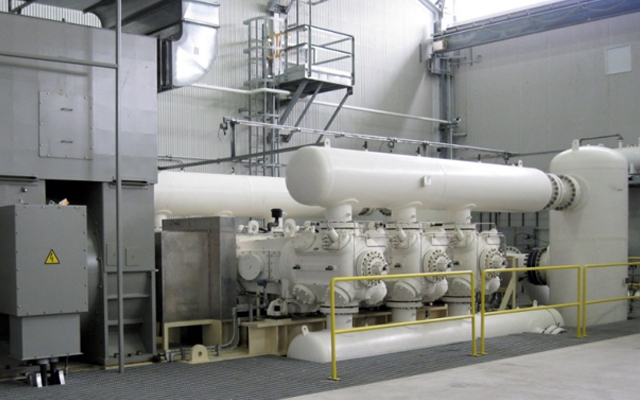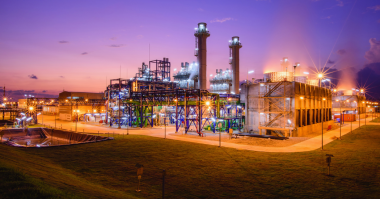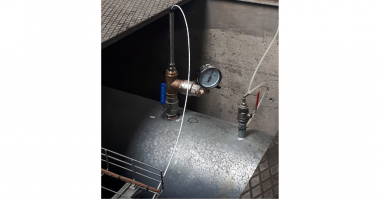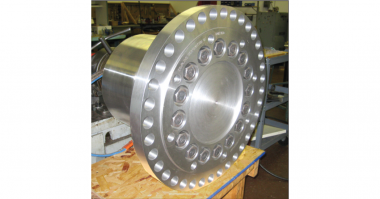“A well applied compressor is the basis of a reliable compression system.” ~ Author: Robert X. Perez, Machinery Engineer
If you are involved in designing new processes, you may not always begin with a blueprint defining all the equipment requirements. Selecting which type of compressor to use for a new process application can be daunting. There are so many compressor designs to consider. Where do you start? Normally, you will know the design SCFM flow, pressures, and gas properties. In this series of columns, I will show you how to zero in on which types of compressors to consider before making a final selection.
Regardless of the type of compressor you are considering, whether it’s a screw, reciprocating, or centrifugal compressor (see Figure 2), they were all sized by knowing the inlet cubic feet of gas per minute (ICFM) flow expected to enter the compressor’s suction nozzle. (Remember that the actual cubic feet per minute (ACFM) equals ICFM at the compressor’s suction nozzle.) The reason ICFM is so important is that it is directly related to the gas velocity at the inlet conditions, since volumetric flow divided by the cross-sectional area equals velocity (Q/A=Velocity). As discussed in previous series of columns, “Demystifying Compressor Flow Terms (Parts 1 through 3)”, the actual cubic feet per minute (ACFM) is constantly changing as the gas flow moves through the suction piping, through the compressor, and then into the discharge piping system. The compressor designer must be aware of the ACFM of the gas as it moves through the compressor to ensure the compressor’s performance is optimized.

Figure 2: The three main categories of gas compressors: Screw, Reciprocating, and Centrifugal Compressors
To make a preliminary compressor selection, you need to have the following design data in hand:
- The required SCFM or ACFM flow
- Compressor discharge pressure
- Compressor suction pressure and temperature
There are three basic steps in the compressor selection process that I am recommending to make a preliminary compressor selection: 1) Determine your ACFM requirements, 2) select potential compressor design candidates from the GPSA “Compressor Coverage Chart compressor selection map, and 3) then make the final selection based on compression ratio requirement.
Gas Flow Requirements:
The first step is determining the actual cubic feet per minute required for the application. An ideal gas can be characterized by three state variables: absolute pressure (P), volume (V), and absolute temperature (T). The relationship between them may be deduced from kinetic theory and is called the ideal gas law: PV=nRT
- n = number of moles
- R = universal gas constant = 8.3145 J/mol K
If the moles or weight in a given gas flow stream remains constant, we can write:
 In Equation 1 above, V is defined as the volumetric flow at any two points in the flow stream.
In Equation 1 above, V is defined as the volumetric flow at any two points in the flow stream.
Starting with equation 1, we can determine gas volumes at difference conditions, such as standard conditions and the actual process conditions. Flow at standard conditions (SFCM) is defined as flow in cubic feet per minute of gas or air flow at standard conditions, which are typically set at 14.696 pounds per square inch absolute (psia), 60 degrees Fahrenheit (oF) (520oR), and 0% relative humidity (RH). Actual cubic feet per minute (ACFM) stands for the cubic feet per minute of gas or air flow at the actual conditions inside the piping. A special distinction is given to flow at the conditions at the compressor inlet flange or nozzle. This gas flow is called inlet cubic feet per minute (ICFM) often used by compressor designers to determine actual gas or air velocities entering a compressor.
In Part 2, I describe how to convert standard cubic feet per minute to inlet cubic feet per minute and provide a few example calculations for clarification. Eventually, we will run through some real-world compressor screening examples. At the end of this series, the reader should have a working knowledge of the compressor selection process.
READ PART 2
About the Author
 Robert Perez is mechanical engineer with more than 35 years of rotating equipment experience in the petrochemical industry. He has worked in petroleum refineries, chemical facilities, and gas processing plants. He earned a BSME degree from Texas A&M University at College Station, an MSME degree from the University of Texas at Austin, and holds a Texas PE license. Mr. Perez has written numerous machinery reliability articles for magazines and conferences proceedings and has authored 4 books and coauthored 4 books related to machinery reliability. He resides in San Antonio, Texas.
Robert Perez is mechanical engineer with more than 35 years of rotating equipment experience in the petrochemical industry. He has worked in petroleum refineries, chemical facilities, and gas processing plants. He earned a BSME degree from Texas A&M University at College Station, an MSME degree from the University of Texas at Austin, and holds a Texas PE license. Mr. Perez has written numerous machinery reliability articles for magazines and conferences proceedings and has authored 4 books and coauthored 4 books related to machinery reliability. He resides in San Antonio, Texas.





Comments